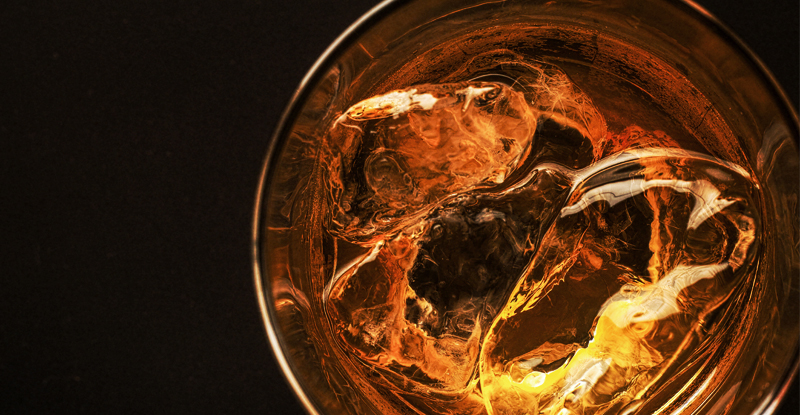Alcohol Addiction and Misuse
UPMC Health Plan is hosting an Alcohol Misuse and Addiction Telehealth Town Hall on April 25. You can participate in this free event by phone or by viewing a live stream from the UPMC Health Plan Facebook page. To sign up to listen by phone, go to upmchp.us/alcoholsupport. You can read the information below on alcohol use and problems ahead of the event.
How common is alcohol use in the United States?
A recent Substance Abuse and Mental Health Services Administration (SAMHSA) survey showed that during the past month, nearly 140 million people in the U.S. ages 12 or older drank alcohol. Alcoholic beverages include beer, malt liquor, wine, or distilled spirits (. One drink refers to a 12-ounce beer (5 percent alcohol content), 1.5 ounces of liquor, or a 5-ounce glass of wine. The amount of alcohol in beverages can vary. Some beers have higher alcohol content than others. A beer with 9 percent alcohol has almost the same alcohol content as two regular beers.
Types of alcohol problems
Excessive alcohol use includes binge drinking, heavy drinking, and alcohol use disorders. Binge drinking is defined as four or more drinks on one occasion for women or five or more drinks for men. Heavy drinking is defined as binge drinking on five or more days in the past 30 days.
Many individuals develop an alcohol use disorder (AUD), which is a pattern of excessive drinking that leads to negative outcomes. An AUD can vary from mild to moderate to severe. A moderate or severe problem is sometimes referred to as alcoholism or alcohol dependence.
Why we should be concerned about alcohol use and alcohol problems
Of those in the 2015 SAMHSA survey, 48 percent reported binge drinking in the past month — with rates highest among 18 – 25-year-olds. Among drinkers, 12 percent reported heavy alcohol use.
The World Health Organization’s top 19 global health concerns (which estimate the potential years of life lost to premature death) ranked alcohol use No. 3 in the world, No. 1 for the Western Pacific and Americas, and No. 2 for Europe. Alcohol use also contributes to medical, psychiatric, family, social, economic, and spiritual problems.
Any amount of alcohol can affect the drinker’s judgement, coordination, and emotions. While binge and heavy drinking are more likely to lead to an AUD, even one episode of drinking can lead to a negative outcome for the drinker, family or friends, or innocent bystanders — including injury or death.
Physical signs of an alcohol use disorder
Some of the physical signs of an AUD include tolerance changes and having withdrawal symptoms. Some people with an AUD need more alcohol to achieve the desired effect. Others get intoxicated with smaller amounts as their tolerance decreases. Examples of withdrawal symptoms when a person using alcohol regularly cuts down or stops drinking include
- increased heart rate or blood pressure
- flushed face
- sweating
- nausea
- vomiting
- insomnia
- headaches
- trembling
- tingling
Behavioral signs of an alcohol use disorder
In addition to physical signs, there are behavioral signs of an AUD, such as
- difficulty controlling drinking
- obsessions about drinking
- loss of control once one starts to drink
- medical, psychological, social, family, or work problems
- spending too much time obtaining, using, or recovering from alcohol’s effects
Why people drink excessively or develop an AUD
People drink alcohol to enjoy food, relax, help them sleep, reduce boredom, and socialize. Drinking can feel good, can be used to cope with stress, or deal with problems and emotions. Some people drink after they are pressured from others. Alcohol problems also run in families. Having a parent with an alcohol problem raises the risk for offspring, even if they are raised in another home where no one drinks. Once someone develops an AUD, they don’t need a reason to drink.
Effects of alcohol on physical health
Alcohol use can affect physical health in the following ways:
- Central nervous system: impaired memory, seizures, slower reflexes, sleep disturbances, brain damage
- Digestive system: cancers of the mouth, tongue, pharynx, and esophagus, irritation of the intestines, inflammation of the pancreas
- Hepatic system: inflammation or destruction of liver tissue, fatty liver, cirrhosis
- Cardiovascular system: weakened heart muscle, coronary artery disease, irregular heartbeat, heart attack, stroke, high blood pressure
Effects of alcohol on mental health
Alcohol use can affect mental health in the following ways:
- Cover up or contribute to a psychiatric disorder
- Interfere with treatment for a psychiatric disorder
- Contribute to a relapse of psychiatric illness after a period of stability
- Increase risk of suicide, especially with depression
What can you do if you are concerned about your drinking?
If you are worried about how much or how often you drink, or the effects of alcohol on your health, behaviors or mood, here are several things you can do:
- Keep track of how much and how often you drink. Use a daily calendar for a month or longer to record the number of drinks.
- Set limits to the amount you consume each drinking occasion.
- Alternate beverages with alcohol and without alcohol to reduce the amount of alcohol you drink.
- Pay attention to the effects of alcohol on your behavior, moods, or activities to determine if alcohol causes problems.
- If you try to quit, but are not successful, you can seek help from a professional (see below).
What type of help is available?
Many resources are available to help someone with an alcohol problem. There are medical treatments for dependence, medications to assist in recovery, and rehabilitation programs (including inpatient and outpatient). There are also counseling and therapy services for individuals, groups, and families. Mutual support programs are also great resources and include Alcoholics Anonymous, Women for Sobriety, Alcoholics Victorious, and programs for families such as Al-Anon.
How UPMC Health Plan can help
UPMC Health Plan has many resources to assist members concerned about their own or a loved one’s alcohol problem. Prescription for Wellness can help the drinker assess their alcohol problem to determine severity level, treatment needed, and treatment options (detox, rehab, medications, mutual support programs). Health Plan care managers can help members discuss ways to reduce or stop drinking, and link them to treatment. Visit upmc.us/behavioralresources for a list of local, state, and national resources for individuals and families who are affected by drug and/or alcohol problems. Life Solutions has trained professionals who can help you cope more successfully with drug/alcohol issues – it’s a no-cost, confidential benefit.
Sources
- Center for Disease Control. Fact sheets on excessive alcohol use, binge drinking, underage drinking, and alcohol use and health. www.cdc.gov/alcohol/fact-sheets. Accessed September 12, 2017.
- Friedmann PD (2013). Alcohol use in adults. The New England Journal of Medicine 368:4, 365-373.
- National Institute on Alcohol Abuse and Alcoholism. Alcohol overdose: The dangers of drinking too much. https://pubs.niaaa.nih.gov/publications/alcoholoverdosefactsheet/overdosefact.htm Accessed September 12, 2017.
- National Institute on Alcohol Abuse and Alcoholism. Rethinking Drinking: Alcohol and Your Health. NIH Publication No. 15-3770. Rockville, MD: U.S. Department of Health and Human Services, 2016.
- Substance Abuse and Mental Health Services Administration, 2016. National Survey on Drug Use and Health. Rockville, MD: US Dept of Health and Human Services.




